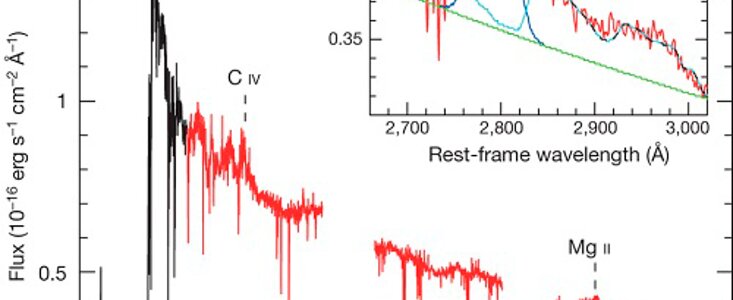Supermassive Black Hole Lurks at Dawn of the Universe
25 Febrero 2015
Infrared observations with the Gemini North telescope have confirmed a 12 billion solar mass black hole in an exceptionally bright quasar in the very early universe. The finding, led by a Chinese team, used Gemini, as well as telescopes from around the world, to discover and characterize an extremely massive black hole from a period when the universe was very young (about 900 million years after the Big Bang). This observation requires extremely rapid growth of the black hole. While black holes of comparable mass have been observed after they have had billions of years to gradually gain mass over cosmic history this quasar challenges astronomers to figure out how such a huge object could exist so early in the history of the universe.
Abstract: So far, roughly 40 quasars with redshifts greater than z=6 have been discovered. Each quasar contains a black hole with a mass of about one billion solar masses. The existence of such black holes when the Universe was less than one billion years old presents substantial challenges to theories of the formation and growth of black holes and the coevolution of black holes and galaxies. Here we report the discovery of an ultraluminous quasar, SDSSJ010013.021280225.8, at redshift z=6.30. It has an optical and near-infrared luminosity a few times greater than those of previously known z>6 quasars. On the basis of the deep absorption trough on the blue side of the Lyman-a emission line in the spectrum, we estimate the proper size of the ionized proximity zone associated with the quasar to be about 26 million light years, larger than found with other z>6.1 quasars with lower luminosities. We estimate (on the basis of a near-infrared spectrum) that the black hole has a mass of ~1.2 x 1010 solar masses, which is consistent with the 1.3 x 1010 solar masses derived by assuming an Eddington-limited accretion rate.
Enlaces
- The research is published in the February 26th issue of Nature, led by Xue-Bing Wu at Peking University in Beijing, China.


